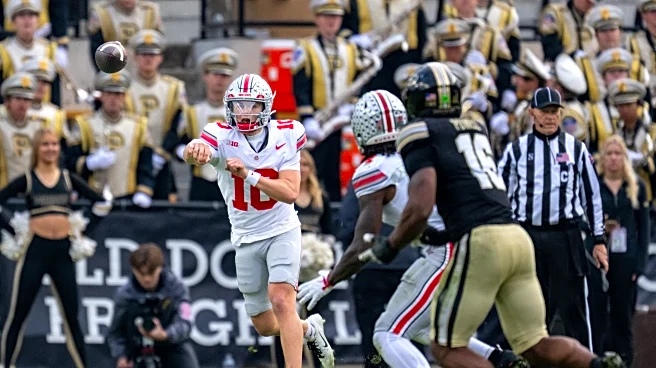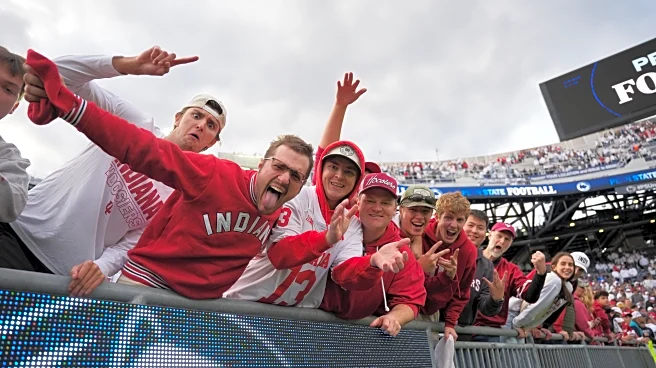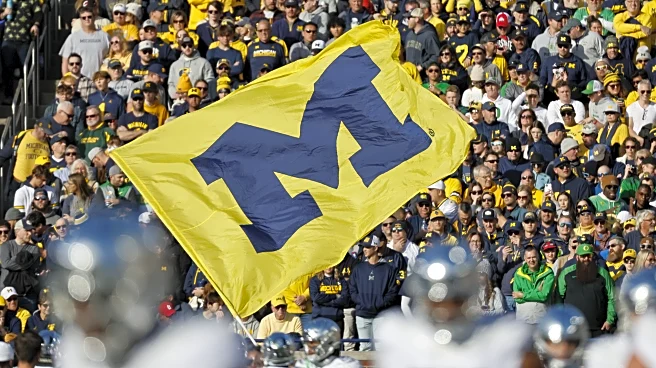What's Happening?
The College Football Playoff (CFP) committee has maintained Indiana's position at No. 2 in the latest rankings following their narrow victory over Penn State. Indiana's win was secured by a last-minute
touchdown pass from quarterback Fernando Mendoza to wide receiver Omar Cooper Jr., which preserved their undefeated season. Despite the close call, the committee, led by chair Mack Rhoads, decided to keep Indiana at No. 2 due to their overall performance and defensive strength. The top five teams remain unchanged, with Ohio State leading, followed by Indiana, Texas A&M, Alabama, and Georgia. The rankings also saw changes in the Group of Five champions, with USF entering the bracket at No. 24, replacing BYU.
Why It's Important?
The decision to keep Indiana at No. 2 highlights the committee's emphasis on a team's overall body of work and resilience in challenging games. This ranking is crucial for Indiana as it positions them for a potential first-round bye in the playoffs, which could significantly impact their postseason success. The rankings also affect other teams vying for playoff spots, such as Texas Tech, which moved up to No. 6 after a convincing win over BYU. The CFP rankings are pivotal in determining the playoff landscape, influencing team strategies and fan expectations as the season progresses.
What's Next?
As the season continues, Indiana will need to maintain their performance to secure their playoff position. The upcoming games will be critical for teams like Texas Tech and Miami, who are looking to improve their rankings and secure playoff spots. The committee will continue to evaluate team performances, with potential changes in rankings based on upcoming match results. Stakeholders, including coaches and players, will focus on strategic adjustments to enhance their chances of advancing in the playoffs.
Beyond the Headlines
The CFP rankings not only impact team standings but also influence recruitment, funding, and media coverage for college football programs. High rankings can lead to increased visibility and support for teams, affecting long-term program development. The committee's decisions reflect broader trends in college football, emphasizing the importance of consistent performance and adaptability in high-pressure situations.














